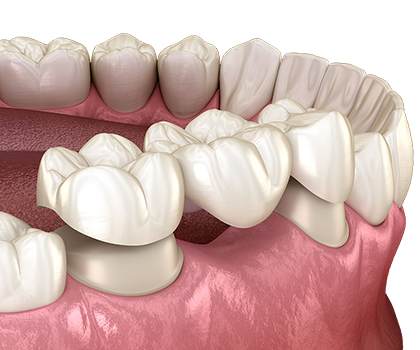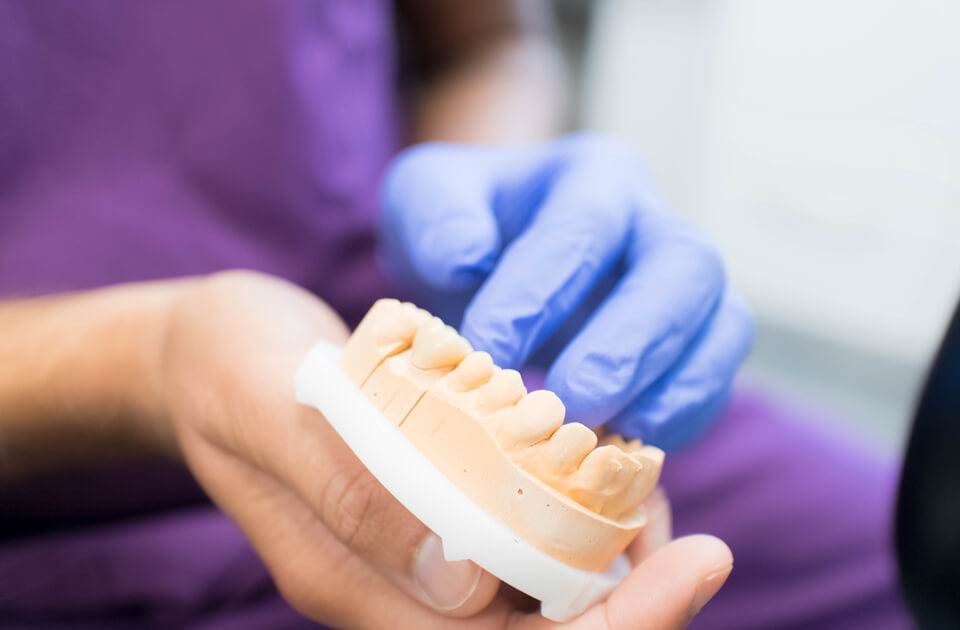Bridges
Why should a tooth need to be root treated?
Deep inside every tooth is a pulp chamber and root canals that contain living tissue called the pulp. The pulp is often mistakenly referred to as the ‘nerve’, but in fact it contains a fine network of tissue fibres, nerves, and blood vessels. If a large cavity in a tooth reaches the pulp chamber, or if a tooth breaks, bacteria can reach the pulp. These bacteria damage the pulp and eventually destroy it. The root canals become infected and inevitably an abscess forms beneath the root of the tooth, in the jawbone.
Benefits of Dental Bridges
Some of the benefits of dental bridges include:
-
Improving your appearance: A dental bridge can help to restore your smile and improve your overall appearance.
-
Maintaining the shape of your face: When you lose a tooth, the surrounding teeth can shift to fill the gap, which can change the shape of your face. A dental bridge can help to prevent this from happening.
-
Making it easier to speak and eat: Missing teeth can make it difficult to speak clearly or chew food properly. A dental bridge can restore your ability to speak and eat normally.
-
Stabilizing your bite: When you lose a tooth, your bite can be affected and the opposite teeth can begin to drift which cause further issues. A dental bridge can help to stabilize your bite and prevent further problems from developing.
- Preventing remaining teeth from shifting: When a tooth is missing, the teeth on either side of the gap can drift into the space, which can cause bite and jaw problems. A bridge can help to keep the remaining teeth in their proper position.
- Long-lasting : Dental bridge with good care can last for many years, sometimes even a lifetime.

How is a root canal treatment done?
Bridges are used to bridge between two teeth that have a gap left by a missing tooth.
How are bridges made?
A bridge is made by constructing crowns on the teeth on either side of the space, and joining these two crowns together by placing a false tooth in the space. The procedure is the same as the crown procedure. The end result is very aesthetic and functional.
Dental bridge aftercare
It’s important to remember that dental bridges are a long-term investment and require the same care as natural teeth. Brushing and flossing daily, as well as regular dental check-ups, will help to ensure the longevity of your dental bridge.
How are Dental Bridges secured?
Dental bridges can be secured to teeth either side of a gap caused by a missing tooth or multiple teeth using dental crowns. Implant-supported bridges are similar to traditional dental bridges. However, they are more secure as they are supported by dental implants and not natural teeth.

